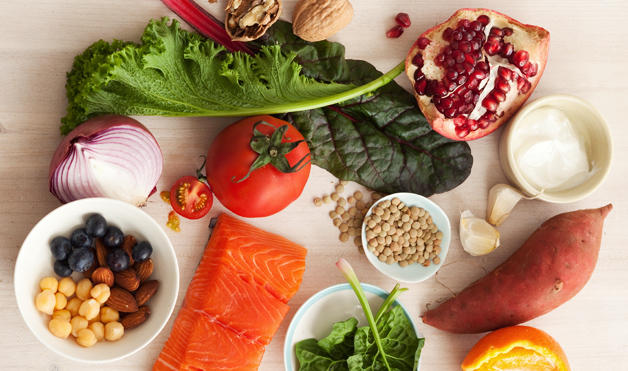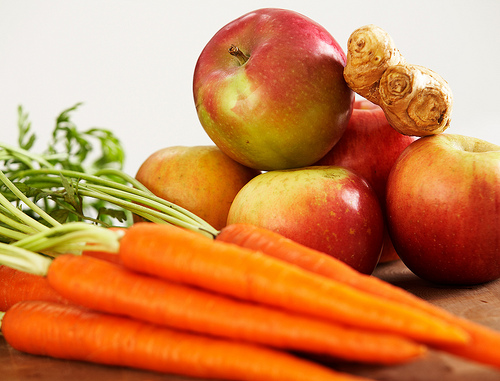Tweak your lifestyle a bit and manage diabetes well
By Nishant Arora
Book: Understanding Type 2 Diabetes; Author: Merlin Thomas; Publisher: Pan Macmillan India; Pages: 277; Price: Rs.350
So you have been diagnosed with Type 2 diabetes. Take heart as this is not the end. Just follow some simple guidelines and achieve better sugar levels for a longer, healthier life.
In his book, Merlin Thomas, a clinical scientist at the Melbourne-based Baker IDI Heart and Diabetes Institute, has decoded the lifestyle disease in such a way that once you're done reading it, winning over diabetes becomes a lot easier.
First the facts.
According to the World Health Organisation (WHO), India will have 80 million people with diabetes by 2030.
The world has over 387 million diabetics and by 2035, this figure will rise to 592 million, says a latest report by the International Diabetes Federation (IDF).
Having diabetes is not easy as several factors - from obesity and sedentary lifestyle to genes and ageing - come into play, but its management need not to be complex or complicated, says Thomas.
Once diagnosed, manage it well with three easy-to-do steps: physical activity, balanced diet and medication.
"Of all the things that can be done to manage your diabetes, getting more physical activity is the most important," Thomas writes.
Exercise offsets insulin as muscles take up a large amount of fat and glucose from the bloodstream to replenish their fuel stores.
This uptake of glucose by muscles is very useful for people with diabetes as it means less work for insulin and other medication.
For example, Type 2 diabetes can lead to reduced blood flow to your feet.
"Regular exercise demands better blood flow to the legs to allow the muscles to work better. The blood vessels supplying your legs progressively adapt to regular exercise to improve the blood flow," Thomas explains.
So "accumulate" the moderate-intensity physical activity by focussing on everyday tasks such as walking the kids to school, walking or cycling to work, taking the stairs, parking a little farther away from markets and breaking the sitting cycle at the workplace.
When it comes to diet, a typical Indian diet consists of food that is rich in sugars (or carbohydrates).
"Also, on average, an Indian gets between 10 and 15 percent of the total energy (calories) from added sugars in processed foods but in some people, it can exceed even 25 percent," Thomas claims.
What happens in Type 2 diabetes is that there is not always enough insulin to keep glucose under control especially after meals.
For this, reduce your intake of carbs.
Instead of biryani or dal, take low-fat meat curry or tandoori. Include non-starchy vegetables like okra and eggplant for potatoes or rice.
"A good place to start is to limit your carb intake to no more than three or four serves (45-60 grams) in each meal or no more than 10 serves (150 grams) a day," Thomas advises.
There is approximately 15 grams of net carbohydrates in one slice of naan, one tablespoon of jam/jelly/sugar/honey, one piece of fresh fruit, a cup of yogurt, two-three biscuits, one muffin, a cup of rice or a large baked potato.
For fibre intake, eat a breakfast cereal that lists "wholegrain" or bran as the main ingredient.
Switch white bread for wholegrain or wholemeal bread. Shun white rice and go for brown rice.
While making fruit juice, do not get rid of the skin and the pulp. For snacks, instead of processed carbs, eat fruits with edible (whole) seeds.
According to Thomas, "for some people with diabetes, changing to a diet with large amount of wholegrain, bran and legumes is a major shift".
If you cannot resist sugary drinks, opt for "diet" beverages with artificial sweeteners.
"When used in recommended amounts, artificial sweeteners appear to have no adverse effects on human health," Thomas writes.
Most people with Type 2 diabetes will reach a point where some medicines are needed to prevent their glucose levels from rising dangerously. This is simply the nature of the disease.
The simple formula is: Coordinate your medications with your diet and lifestyle to ensure the maximum effectiveness of each.
"Just remember that medicines are not an alternative to good diet and regular exercise and work better if all are combined," contends Thomas who has written over 250 book chapters and books on diabetes management.
To sum up, diabetes is not a punishment for the nutritionally wicked nor is exercise the castigation of the couch potato.
"These are positive steps that have their rewards as you decide to control diabetes. Your effort is never futile," the writer concludes.
Coffee shields you against breast cancer recurrence
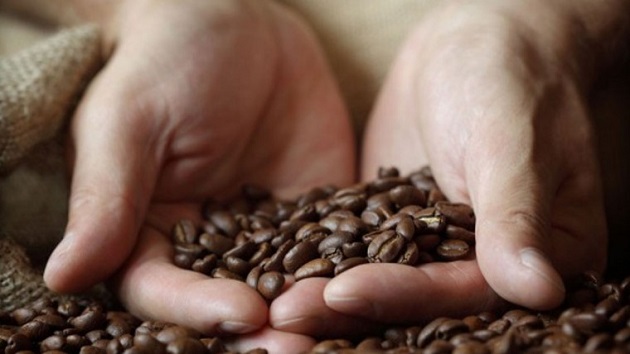
London, April 22 (IANS) Drinking just two cups of coffee a day can help inhibit the growth of tumours and reduce the risk of recurrence in women who have been diagnosed with breast cancer, a new research suggests.
The researchers combined information about the patients' lifestyle and clinical data from 1,090 breast cancer patients with studies on breast cancer cells.
"The study shows that among the over 500 women treated with (the drug) tamoxifen, those who had drunk at least two cups of coffee a day had only half the risk of recurrence of those who drank less coffee or none at all," explained Ann Rosendahl, one of the researchers from Lund University in Sweden.
"The study also shows that those who drank at least two cups of coffee a day had smaller tumours and a lower proportion of hormone-dependent tumours. We saw that this was already the case at the time of diagnosis," Rosendahl noted.
In the cell study, the researchers looked more closely at two substances found in coffee -- caffeine and caffeic acid.
"The breast cancer cells reacted to these substances, especially caffeine, with reduced cell division and increased cell death, especially in combination with tamoxifen," Rosendahl noted.
"This shows that these substances have an effect on the breast cancer cells and turn off signalling pathways that the cancer cells require to grow," Rosendahl said.
The study appeared in the journal Clinical Cancer Research.
How sleep and memory go hand-in-hand
.jpg)
Washington, Jan 24 (IANS) Finding a new co-relationship between sleep and memory, a new study on flies has discovered that sleep, memory and learning are deeply connected.
When dorsal paired medial (DPM) neurons, well known memory consolidators in Drosophila, were activated, the flies slept more; when deactivated, the flies kept buzzing, found the study.
These memory consolidators inhibit wakefulness as they start converting short term to long term memory.
"Knowing that sleep and memory overlap in the fly brain can allow researchers to narrow their search in humans," said Bethany Christmann, graduate student in Griffith Lab, Brandeis University, Waltham, Massachusetts.
All these take place in a section of the Drosophila brain called the mushroom body, similar to the hippocampus, where our memories are stored.
As it turns out, the parts of the mushroom body responsible for memory and learning also help keep the Drosophila awake.
"It is almost as if that section of the mushroom body were saying 'hey, stay awake and learn this. Then, after a while, the DPM neurons start signalling to suppress that section, as if to say 'you are going to need sleep if you want to remember this later," Christmann pointed out.
Studies have shown that sleep is critical in converting short term into long term memory, a process known as memory consolidation.
Understanding how sleep and memory are connected in a simple system, like Drosophila, can help scientists unravel the secrets of the human brain.
"Eventually, it could help us figure out how sleep or memory is affected when things go wrong, as in the case of insomnia or memory disorders," Christmann concluded.
Low Vitamin D levels may lead to early death
London, Nov 19 (IANS) Vitamin D deficiency is not just bad for your bone health, it can also result in various other diseases leading to an early death, research shows.
The study based on examination of genes has established for the first time a causal relationship between low Vitamin D levels and increased mortality, the researchers claimed.
"We can see that genes associated with low Vitamin D levels involve an increased mortality rate of 30 percent and, more specifically, a 40 percent higher risk of cancer-related deaths," said Shoaib Afzal, medical doctor at Herlev Hospital, Copenhagen University Hospital in Denmark.
"An important factor in our study is that we have established a causal relationship," Afzal added.
When the sun shines on our skin, the skin produces Vitamin D. Evidence suggests that sunshine has a positive effect on our health, but sunburns must be avoided as they increase the risk of skin cancer.
A diet rich in Vitamin D or the intake of Vitamin D supplements can also cover our need to some extent.
The study involved 96,000 people from large-scale population studies in Denmark.
Vitamin D levels were measured using blood samples from the studies, and specific genetic defects were examined. All participants were followed for mortality from 1976 until 2014.
"Our study shows that low Vitamin D levels do result in higher mortality rates," Borge Nordestgaard from University of Copenhagen said.
Why stress makes people grumpy

New York, Sep 19 (IANS) Why is it that when people are too stressed they are often grouchy, grumpy, nasty, distracted or forgetful? Researchers have now discovered the mechanism that explains the relationship between chronic stress and the loss of social skills and cognitive impairment.
When triggered by stress, an enzyme attacks a synaptic regulatory molecule in the brain, leading to behavioural problems, the findings showed.
"The identification of this mechanism is important because it suggests potential treatments for neuropsychiatric disorders related to chronic stress, particularly depression," said co-researcher Carmen Sandi from Brain Mind Institute (BMI) at Swiss Federal Institute of Technology in Lausanne, Switzerland.
For the study, researchers studied a region of the hippocampus known for its involvement in behaviour and cognitive skills.
In there, scientists were interested in a molecule, the nectin-3 cell adhesion protein, whose role is to ensure adherence, at the synaptic level, between two neurons.
Positioned in the postsynaptic part, these proteins bind to the molecules of the presynaptic portion, thus ensuring the synaptic function.
However, the researchers found that on rat models affected by chronic stress, nectin-3 molecules were significantly reduced in number.
The investigations conducted by the researchers led them to an enzyme involved in the process of protein degradation: MMP-9.
It was already known that chronic stress causes a massive release of glutamate, a molecule that acts on NMDA receptors, which are essential for synaptic plasticity and thus for memory.
What these researchers found now is that these receptors activated the MMP-9 enzymes which, like scissors, literally cut the nectin-3 cell adhesion proteins.
"When this happens, nectin-3 becomes unable to perform its role as a modulator of synaptic plasticity" Sandi explained.
In turn, these effects lead subjects to lose their sociability, avoid interactions with their peers and have impaired memory or understanding.
The study appeared in the journal Nature Communications.
You eat what your gut bacteria want!
New York, Aug 16 (TIWN) Cannot resist those fatty foods even though you wish to trim down? It could be because of the bacteria living with you that can manipulate your brain to eat what they want to feed on, suggests a study.
Microbes influence human eating behaviour and dietary choices to favour consumption of the particular nutrients they grow best on, rather than simply passively living off whatever nutrients we choose to send their way, the researchers noted.
"Bacteria within the gut are manipulative," said corresponding author on the paper Carlo Maley from University of California San Francisco in the US.
"There is a diversity of interests represented in the microbiome, some aligned with our own dietary goals, and others not," Maley explained.
This diverse community of microbes, collectively known as the gut microbiome, may influence our decisions by releasing signaling molecules into our gut, the authors said.
Because the gut is linked to the immune system, the endocrine system and the nervous system, those signals could influence our physiologic and behavioural responses.
Gut bacteria may affect our eating decisions in part by acting through the vagus nerve, which connects 100 million nerve cells from the digestive tract to the base of the brain.
However, people can influence the compatibility of these microscopic, single-celled houseguests by deliberately altering what they ingest, Maley said, with measurable changes in the microbiome within 24 hours of diet change.
"Because microbiota are easily manipulatable by prebiotics, probiotics, antibiotics, fecal transplants, and dietary changes, altering our microbiota offers a tractable approach to otherwise intractable problems of obesity and unhealthy eating," the authors wrote.
The study based on review of the recent scientific literature appeared in the journal BioEssays.
Double your fruits, vegetables intake for super health: Report
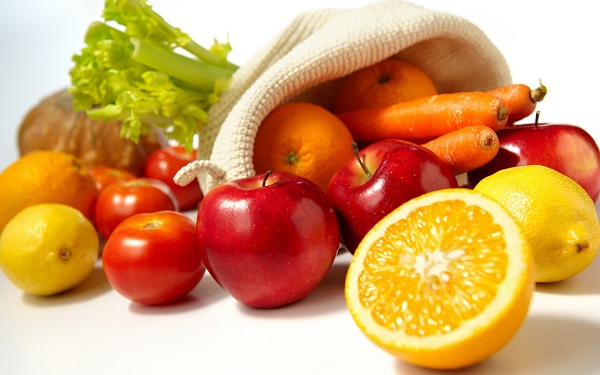
New Delhi, Aug 11 (IANS) Adults worldwide should at least double their current consumption of fruits and vegetables to meet the World Health Organisation’s (WHO) minimum recommendation of five servings (400 grams) per day, emphasises a study.
According to the “Global Phytonutrient Report 2014” released by Nutrilite Health Institute here Monday, 60 to 87 percent adults globally fall short of the WHO recommendation and are missing out on crucial nutrition and health benefits.
The fruits and vegetable intake is pretty dismal in Asian countries, including India, researchers emphasised.
“The findings highlight a global need for increased awareness of the relationship between fruit and vegetable consumption and phytonutrient intakes,” said Keith Randolph, a nutrition technology strategist at the Nutrilite Health Institute and co-author of the research.
It implies that most adults worldwide are not receiving the quantity or variety of phytonutrients - organic compounds found in fruits and vegetables - potentially needed to support their health and wellness.
The team examined the impact of low fruit and vegetable consumption on phytonutrient intake in each of the 13 regions under study.
They found that adults consuming five or more daily servings of fruits and vegetables had two to six times the average intake of phytonutrients of adults consuming fewer than five servings per day.
While specific recommendations for phytonutrient consumption levels have not yet been established uniformly worldwide, a growing body of research suggests that eating foods rich in phytonutrients may provide a range of health benefits, from promoting eye, bone and heart health, to supporting immune and brain function.
Many phytonutrients are powerful antioxidants that can help fight the damage caused to our bodies’ cells over time.
“Both the amount and variety of fruits and vegetables in a person’s diet are important,” stressed study co-author Mary Murphy, a senior managing scientist at US-based Exponent Inc.
In order to consume a range of phytonutrients, people should aim to meet recommended intakes of fruits and vegetables and eat an assortment of fruits and vegetables, he added.
The findings of the report appeared in the British Journal of Nutrition.
'Loves me, loves me not' riddle may ruin your sex life

Washington, June 19 (IANS) Do you keep thinking whether your partner loves you or not? You could be suffering from relationship obsessive-compulsive disorder (ROCD) that is detrimental to your sex life.
People who worry about whether their partners love them - or whether they love their partner - could have a damaging impact on their own sex lives, the study warns.
"ROCD symptoms are often overlooked by family and couple therapists," said researcher Guy Doron of Interdisciplinary Centre (IDC) Herzliya in Israel.
Those who question their love life, thinking about whether they would be happier with someone else or requiring repeated reassurances from their other half, may simply be experiencing a natural level of insecurity.
"When these worries start to have an impact on everyday life, particularly on someone's ability to do their job, it could mean they are suffering from a condition known as "relationship obsessive-compulsive disorder" (ROCD)," Doron was quoted as saying.
The researchers said that it may actually be better for people showing ROCD symptoms to have these symptoms treated before entering couples therapy for sexual and relationship problems.
It's never too late to lose weight

London, May 21 (IANS) Are you not hitting the gym thinking that weight loss at your age may not be of any help?
Think again as researchers have now found that weight loss at any age in adulthood is beneficial as it could yield long-term heart and vascular benefits.
“Our findings suggest that losing weight at any age can result in long-term cardiovascular health benefits, and support public health strategies and lifestyle modifications that help individuals who are overweight or obese to lose weight at all ages," said professor John Deanfield from University College London (UCL).
The study examined the impact of lifelong patterns of weight change on cardiovascular risk factors in a group of British men and women followed since birth in March 1946.
They showed that the longer the exposure to excess body fat (adiposity) in adulthood, the greater the cardiovascular-related problems in later life, including increased thickness of the carotid artery walls, raised systolic blood pressure, and increased risk of diabetes.
Adults who drop a BMI (body mass index) category - from obese to overweight, or from overweight to normal - at any time during adult life, even if they regain weight, can reduce these cardiovascular manifestations.
"Our study is unique because it followed individuals for such a long time, more than 60 years, and allowed us to assess the effect of modest, real-life changes in adiposity,” Deanfield added.
The findings appeared in the journal The Lancet Diabetes & Endocrinology.
Women over 40 most affected by osteoarthritis
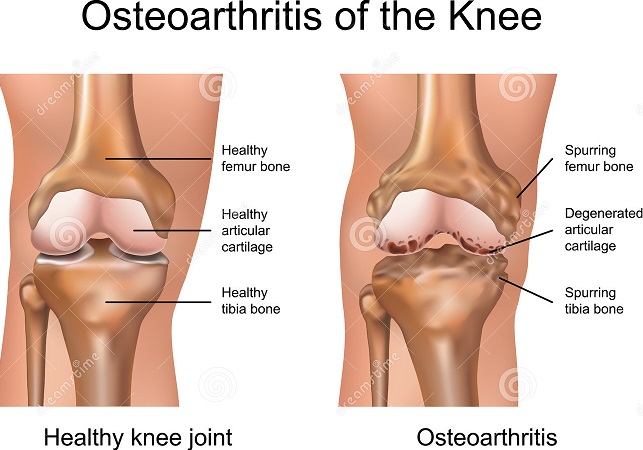
New Delhi, May 8 (IANS) Women over the age of 40 are most affected by osteoarthritis and this is corroborated by the fact that they form 60 percent of the patients that undergo total knee replacement, an expert said Thursday.
However, despite this, it has been observed that women delay surgery due to various factors which leaves them with agony and incapacitation, he said.
"Osteoarthritis of the knee is the most common cause of disability. And it is a disease of age that affects more women than men on a 60-40 basis," said Arthritis Foundation of India (AFI) chairman Sushil Sharma.
"General physicians sometimes have advised patients to wait as long as they can before pursuing knee replacements, with the thinking that it is an once-in-a-lifetime surgery that should last an average of 15 to 20 years.
"However, delaying surgery beyond a point can limit the quality of life of patients because how they function before surgery have bearing on their performance afterward," he said.
The Arthritis Foundation of India appealed against the general lack of awareness and negligence towards the healthcare of patients with osteoarthritis.
Embrace daily massage to improve health
.jpg)
New York, April 18 (IANS) Love massage? You now have a scientific reason to go for it now.
Massage does improve vascular function in people who had not exercised, says research, suggesting that massage has benefits for people regardless of their level of physical activity.
Massage therapy improves general blood flow and alleviates muscle soreness after exercise, according to researchers.
“Improved circulation and relief of muscle soreness are common claims made for massage's benefits, but no studies have substantiated such claims till date,” said Shane Phillips, an associate professor of physical therapy at University of Illinois at Chicago (UIC).
“Our study validates the value of massage in exercise and injury, which has been previously recognised but based on minimal data,” added Nina Cherie Franklin, a post-doctoral fellow at UIC.
The researchers had set out to see if massage would improve systemic circulation and reduce muscle soreness after exercise.
Healthy sedentary adults were asked to exercise their legs to soreness using a standard leg press machine.
Half of the exercisers received leg massages, using conventional Swedish massage techniques, after the exercise.
As expected, both exercise groups experienced soreness immediately after exercise.
The exercise-and-massage group reported no continuing soreness 90 minutes after massage therapy.
The exercise-only group reported lasting soreness 24 hours after exercise.
“We believe that massage is really changing physiology in a positive way. This is not just blood flow speeds - this is actually a vascular response,” Franklin added.
What to do before morning workout?
Los Angeles, April 5 (IANS) Working out in the morning may seem like a pain but it's the best way for a healthy start to the day.
Working out in the morning kickstarts one's metabolism and helps you in burning more fat during the day. So make sure you rise early and be prepared to hit the gym, reports femalefirst.co.uk.
* Alarm: Adjust your alarm clock to get up earlier than usual to head to the gym, fit in a run or do some Pilates to wake you up.
* Bag: Prepare your bag or kit the night before. If it's not done then you'll only use it as an excuse to not get out of bed.
* Snack: If you can't work out without having eaten first, then it would be advisable to eat a banana. Just a small one, plus bananas are great for slow releasing energy too.
Try and prepare a healthy snack for afterwards too, something that's rich in protein to help repair your body; boiled eggs are an easy snack as they can be prepared the night before.
* Alcohol: Don't drink too much alcohol the night before a morning workout as it will only give you a headache and another excuse to stay in bed.
* Bedtime: If you're getting up earlier than usual then it makes sense to go to bed earlier than normal to make sure your body is well rested.
Now, do you have an excuse for skipping a morning workout session?
Sleep quality does affect decision-making ability
New York, April 1 (IANS) Fragmented or lower sleep efficiency may affect executive function as it is linked to decline in cognitive abilities of older people over a period of three to four years, a study has found.
Poor sleep quality is associated with a 40 to 50 percent increase in the odds of clinically significant decline in executive function, which was similar in magnitude to the effect of a five-year increase in age.
“This study provides an important reminder that healthy sleep involves both the quantity and quality of sleep,” said M. Safwan Badr, president of American Academy of Sleep Medicine.
The study involved 2,822 community-dwelling older men at six clinical centres in the US
Participants had a mean age of 76 years.
An average of five nights of objective sleep data were collected from each participant using a wrist actigraph.
Cognitive function assessment included evaluation of attention and executive function using the Trails B test.
According to the study authors, executive function is the ability for planning or decision making, error correction or trouble shooting and abstract thinking.
The study appeared in the journal Sleep.
Chocolate can reduce long-term stroke risk: Study

Washington, March 19 (IANS) Love chocolate? Here's why you should love it even more! For the first time, researchers from Louisiana State University have proved how eating dark chocolate can benefit the heart.
For centuries the health benefits of eating dark chocolate have been praised, but the exact reason has remained a mystery, until now.
Researchers have from the Louisiana State University have found out that a certain bacteria in the stomach turns the chocolate into anti-inflammatory compounds, that are good for the heart.
Their findings were unveiled at the 247th National Meeting and Exposition of the American Chemical Society.
Maria Moore, an undergraduate student and one of the researchers said, "We found that there are two kinds of microbes in the intestine: the `good' ones and the `bad' ones."
"The good microbes, such as Bifidobacterium and lactic acid bacteria, feast on chocolate. When you eat dark chocolate, they grow and ferment it, producing compounds that are anti-inflammatory," she said.
The other bacterias in the intestine are associated with inflammation and can cause gas, bloating, diarrhoea and constipation. These include some Clostridia and some E. coli, Science Daily reported.
"When these compounds are absorbed by the body, they reduce inflammation of cardiovascular tissue of the heart, reducing the long-term risk of stroke," said research head John Finley.
He said that this study is the first to look at the effects of dark chocolate on the various types of bacteria in the stomach.
Crash diet makes people lose friends too?
London, March 2 (IANS) Crash diet is considered to be unhealthy in the long run. Followers of crash diet not only gain the weight they have lost when they return to regular diet, a survey reveals they also lose friends.
The research released by Nakd Wholefoods has found just how irritating people find their friends when they diet, with a third of them deliberately avoiding those they know to be dieting and a quarter even trying to sabotage their friends’ bids to lose weight, reports femalefirst.co.uk.
"I'm surprised that so many people are avoiding their friends who crash diet, our research shows that we're happiest when we're not on a diet so people shouldn't feel pressure to crash diet this January - healthy options for snacking alone have become so widely available, and taste great too, so you don’t have to compromise," said Marina Love, marketing director at Nakd Wholefoods.
The research reveals that two-thirds of the friends, colleagues and partners of dieters find them irritating for a number of reasons: they talk about their diet too much; make them as non-dieters feel bad about themselves for not dieting; find dieters grumpy and miserable; that dieters refuse to socialise and ban treats such as birthday cake.
Shun loneliness to live longer

New York, Feb 17 (IANS) In your sixties and feeling extremely lonely? Protect yourself from loneliness and depression to avoid early death.
Feeling extreme loneliness can increase an older person's chances of premature death by 14 percent, shows an alarming research.
“The impact of loneliness on premature death is nearly as strong as the impact of disadvantaged socioeconomic status - that increases the chances of dying early by 19 percent,” said John Cacioppo, professor of psychology at the Illinois-based University of Chicago.
It is not solitude or physical isolation itself, but rather the subjective sense of isolation that the study shows to be so profoundly disruptive.
“Older people living alone are not necessary lonely if they remain socially engaged and enjoy the company of those around them. Some aspects of aging, such as blindness and loss of hearing, however, place people at a special risk for becoming isolated and lonely,” added Cacioppo.
The researchers looked at dramatic differences in the rate of decline in physical and mental health as people age.
Cacioppo and colleagues examined the role of satisfying relationships on older people to develop their resilience, the ability to bounce back after adversity and grow from stresses in life.
Feeling isolated can disrupt sleep, elevate blood pressure, increase morning rises in the stress hormone cortisol, alter gene expression in immune cells, and increase depression and lower overall subjective well-being, they observed.
“Older people can avoid the consequences of loneliness by staying in touch with former co-workers, taking part in family traditions and sharing good times with family and friends,” advised Cacioppo.
Although some people are happy to be alone, most people thrive from social situations in which they provide mutual support and develop strong rapport, said the study.
Avoid diabetes with yoga, weight lifting
London, Jan 15 (IANS) If you wish to avoid turning diabetic, better start exercising for just half-an-hour a day, a Harvard University research has found while advising yoga and weight lifting.
According to the research, the chance of developing Type 2 diabetes was cut by between 30 and 40 per cent with just three-and-a-half hours of exercise a week, Daily Mail reported Wednesday.
It was also found that just an hour's workout every week could cut the risk by 13 percent.
The study, which followed 100,000 women, also showed muscle-strengthening exercises such as yoga and weight lifting fend off the condition.
Scientists showed that those doing at least 150 minutes of aerobic activity a week - and at least an hour of muscle-strengthening - had the best results.
Published by the journal PLOS Medicine, the study was carried out by scientists from Harvard School of Public Health and the University of Southern Denmark.
Researchers studied 99,316 middle-aged and older women, who did not have diabetes at the beginning of the study, for eight years. During the period, 3,491 women developed Type 2 diabetes.
They studied the effects of weekly time spent on resistance exercise, lower intensity muscular conditioning exercises and aerobic moderate and vigorous physical activity.
"Our study suggests that engagement in muscle-strengthening and conditioning activities (resistance exercise, yoga, stretching, toning) is associated with a lower risk of (Type 2 diabetes)," the researchers said.
"Despite limitations to which this research can be applied to women in general, it underlines the message that leading an active healthy lifestyle can help to reduce the risk of Type 2 diabetes," said Richard Elliott, research communications officer at Diabetes, UK.
Kerala resort gets national energy conservation award
Delhi/Thiruvananthapuram, Dec 16 (IANS) The plush Poovar Island Resort in Kerala Monday received the prestigious National Energy Conservation Award-2013 from President Pranab Mukherjee.
Speaking to IANS, M.R. Narayanan, managing director of the company that owns the resort, said 829 industrial units and establishments in the country vied for this prestigious award and they were proud that their resort won.
"We had undertaken numerous measures like introduction of a solar power boat, a heating system using waste generated there and a bio-gas plant at the resort resulting in saving of considerable energy.
"We will be undertaking further measures in the coming years to save and generate power using non-conventional sources with the aim of achieving an energy neutral position," he said.
The resort is located near the Kovalam beach and it can be reached only by a boat.
Want to drop a size by X-Mas, follow celebs' diet
London, Dec 1 (IANS) Do you want to look your best during the festive season? Drop those extra pounds by opting for suitable celebrities' diets.
Mirror.co.uk reports that experts have assessed the diets Megan Fox, Jennifer Aniston, Pippa Middleton and Holly Valance swear by.
Pick the plan that's right for you and drop a dress size in time for Christmas:
Top nutritionist Angela Dowden gives her verdict on which ones work best.
1. Weight Watchers - loved by Patsy Kensit
How it works: Sign up and follow joined Weight Watchers' ProPoints plan. Every food is worth a different number of 'points', all of which add up to your weekly limit. Your limit will depend on your personal health and weight loss goals.
The expert says: “Weight Watchers is nutritionally sound and gets the thumbs up from docs. You're encouraged to eat lots of fruit and vegetables and nothing's banned.
"Instead you think about the quality of what you eat in terms of how it curbs your hunger rather than just counting calories. There's a big emphasis on group support too which helps a lot of people.”
2. Paleo Diet - loved by Megan Fox and Gary Barlow
How it works: The diet is based on the principle that we should eat the way we did back in the Paleolithic era - i.e. if a cave man wouldn't have eaten it, neither should you. All cereal grains are banned, as are dairy products, processed foods, beans and potatoes. But there's good news for meat-eaters. Paleo encourages you to eat your fill of meat, fish and eggs, accompanied by fresh fruit and vegetable. And there's no strict plan, it's just a case of sticking to the right foods.
The expert says: “If you can't bear going without the carbohydrates it's definitely not for you. But having a bit more lean steak, salad and sweet potato is delicious and can make weight loss seem less painful.”
3. 5:2 Diet - loved by Jennifer Aniston, Beyonce and Phillip Schofield
How it works: Eat normally for five days and 'fast' for two, cutting down your calorie intake to just a quarter of the usual daily amount. This adds up to 500 for women and 600 for men. It's been one of the most popular diets of the last year.
The expert says: “Grab yourself a 5:2 cookery book for inspiration and you can still enjoy gourmet food even on your 'fast' days off. It's also one of the few that's had proper medical research done into it.”
4. Dukan Diet - loved by Carole and Pippa Middleton
How it works: There are four phases:
The Attack Phase: For two to seven days, limit foods to those high in protein. Stick to lean meats, fish and eggs and non-fat dairy products. Tofu and quorn are also ok.
Cruise Phase: Add in vegetables. You can alternate veggie days and meat days or eat them together. No starchy vegetables like potatoes allowed. Grains and pulses are also off the menu, as is fruit (for now). Stick to this until your target weight is reached.
Consolation Phase: This slowly reintroduces 'normal' foods without you piling the weight back on. Add two slices of bread and one portion of fruit and cheese to your daily diet. You can also allow yourself two servings of carbohydrates and two “celebration” meals a week. For every pound lost during the Cruise Phase, stay in the Consolation Phase for five days. So if you have lost six pounds, do it for 30 days.
Permanent Stabilization Phase: Eat normally again six days a week. Once a week have a protein-only day as you did in the Attack Phase.
The expert says: “You have to be seriously dedicated to try this diet. Be aware that cutting out food groups can lead to deficiencies, so you may need to take a multivitamin.”
5. Clean and Lean Diet - loved by Holly Valance and Hugh Grant
How it works: The key is to stick to fresh, unprocessed foods, as close to their natural state as possible. For example, a chopped apple still looks like an apple while a crisp or chip looks nothing like a potato. If something is unrecognisable, it's probably been heavily processed - avoid. Artificial flavours or preservatives are a no-go so it's goodbye ready meals and takeaways. Foods should generally contain fewer than five or six ingredients to ensure they're as natural as possible. There is no exact plan. Eat three meals a day and try to include three key elements: protein in the form of lean meat or fish, fat in the form of avocado, nuts, seeds, and olive or coconut oil, plus vegetables. A rainbow of different colours ensures you're getting different vitamins and minerals so fill your plate with spinach, peppers, broccoli, and sweet potatoes.
The expert says: “The essential principle - cutting out processed foods and eating lots of healthy greens - is good. You shouldn't go short of nutrients and because there's bulky veg you'll feel full. You don't have to cut out carbs either, try to have some brown rice, quinoa, lentils and you'll be really healthy. You still need to watch portion sizes and how many homemade smoothies you have.”
Washington exhibition explores yoga mysteries through art
By Arun Kumar
Washington, Nov 10 (IANS) The mysteries of the ancient Indian practice of yoga and its profound meanings are explored in what is described as the world's first exhibition of yogic art at Washington's Smithsonian's Arthur M. Sackler Gallery.
Through masterpieces of Indian sculpture and painting, Yoga: The Art of Transformation explores yoga's rich diversity and historical ransformations, including its philosophies, transformational goals, and importance within multiple religions.
On view through Jan 26, 2014, the exhibition with more than 130 objects borrowed from 25 museums and private collections in India, Europe, and the United States, also examines the varied roles that yogis and yoginis played in society, from sages to spies.
Highlights include an installation that reunites for the first time three monumental stone yogini goddesses from a tenth-century Chola temple; ten folios from the first illustrated compilation of asanas (yogic postures), made for a Mughal emperor in 1602; and Thomas Edison's Hindoo Fakir (1906), the first movie ever produced about India.
"This exhibition looks at yoga's ancient roots, and how people have been trying to master body and spirit for millennia," said Julian Raby, The Dame Jillian Sackler Director of the Arthur M. Sackler Gallery and Freer Gallery of Art.
"By applying new scholarship to both rarely seen artworks and recognized masterpieces, we're able to shed light on practices that evolved over time-from yoga's ancient origins to its more modern emergence in India, which set the stage for today's global phenomenon."
A free public festival, "Diwali and the Art of Yoga," marked the Oct 26 opening of the exhibition and Diwali, the Indian festival of lights with spotlight tours, rangoli (rice powder) drawings and yoga-inspired art in hands-on workshops.
In conjunction with "The Art of Transformation," the Freer and Sackler galleries will also host "Yoga and Visual Culture," a free interdisciplinary symposium for scholars and yoga enthusiasts Nov 21-23.
Seventeen scholars from a range of disciplines will present cutting-edge research on diverse aspects of yoga's visual culture, organized around such topics as "Yoga and Place" and "Yoga and Print Culture."
Following its Washington, DC, debut, "The Art of Transformation" will travel to the San Francisco Asian Art Museum (Feb 21-May 25, 2014) and the Cleveland Museum of Art (June 22-Sep 7, 2014).
Diwali not so happy for heart, diabetic patients
Diwali being celebrated in Bangalore on Nov. 3, 2013
New Delhi, Nov 2 (IANS) Diwali, the festival of lights, is meant for feasting, bursting crackers and enjoying with the family, but doctors warn that patients suffering from lung and heart diseases, hypertension and diabetes need to exercise caution as their condition might worsen.
Highly saturated food like sweets consumed during this period can increase cardiac problems and aggravate health issues in people with hypertension and diabetes.
"Post-Diwali, heart patients and people suffering from hypertension, diabetes and breathing problems queue up in the hospitals as they do not abide by the precautions prescribed by doctors during such time." Purshotam Lal, chairman of Metro Hospitals and Heart Institute, told IANS.
Also, very importantly since the weather is also undergoing a change, people should be well clad and not get a cold. Last but not the least, binge eating, drinking and smoking should be avoided during festivities, he said.
"Since it is celebration time, people consume highly saturated food and sweets that affect those suffering from diabetes and high blood pressure and as it is winter time too they do not exercise which lands them at the doctor's doors. Those with heart and lung problem should say no to crackers," he said.
He said during Diwali, respiratory problems also see a rise due to increase in pollution due to crackers.
"The climate also changes during this time and patients of bronchial asthma are more prone to developing infections," he said.
Lal said to prevent respiratory problems, people, particularly those who are prone to bronchial asthma, should avoid being too close to burning fire crackers and avoid smoke.
According to Sandeep Sindhu, senior consultant, ENT at Indraprastha Apollo Hospitals: "The level of suspended particles in the air increases alarmingly during Diwali, causing breathing, eye, throat and nose problems. The pollution level shoots up due to lighting of crackers during the festival."
Those having hypersensitive airways need to be extra careful. People are advised to stay indoors to avoid inhaling smoke from outside. People suffering from asthma can increase medication and should immediately approach the doctor if the problem aggravates, he said.
Deepika Aggarwal, nutritionist, Indraprastha Apollo Hospitals, suggested festivities are best celebrated with dry fruits as compared to chips and sweets.
"Eating dry fruits is better as it satiates one for long hours in addition to consumption of less calories. People should avoid chips and sweets. Its better for not only those who have one or another lifestyle problems, but also for those who don't suffer from these problems," she added.
Top four autumn fruits, vegetables to look gorgeous
New York, Oct 20 (IANS) Fruits and vegetables like apples and pumpkin have great nutritional value. Their consumption can clear out acne or even delay wrinkle formation, says an expert.
Peggy Kotsopoulous, holistic nutritionist and culinary consultant, provides a list of foods to get us glowing from the inside out, reports huffingtonpost.com:
- Sweet potatoes: They contain vitamin A, which is an anti-inflammatory and helps fight off acne-causing bacteria. Vitamin A and vitamin C (which is also present in the vegetable), help to prevent acne and to heal it if you already have it.
- Pumpkin seeds: It is packed with zinc, an essential in the creation of new skin cells and an aid in protein synthesis and collagen formation. It controls the production of oil in the skin and adds colour and brightness to the complexion.
- Apples: Vitamin C, found in these fruits, helps to firm and tone up the skin. It prevents free-radical damage, protects your skin cells and delays signs of ageing.
- Beets: They are great source of anthocyanins, a powerful antioxidant that reduces inflammation and slow down the ageing process, helping to prevent wrinkles.
Naldhera: Golf, Nordic resort and much more
By Jaideep Sarin, Oct 13, 2013

Staying in a boutique mountain resort built in Nordic design with pinewood logs from Finland, playing golf on a 2,200-metre high course with towering cedar trees as the backdrop, breathtaking views of the Himalayas and mingling with simple hil folks. And all this packaged into one makes for a refreshing holiday.
Naldhera, one of the highest 18-hole courses in the world, would charm any avid golfer given the completely different terrain that it offers for golf. The lush green course, spread over the hill slopes, is a delight to watch and play.
The golf course was a favourite spot of British viceroy Lord Curzon, who was so in awe of the beauty of the place that he named his third and youngest daughter Lady Alexandra Naldhera (1904-1995).
Located 22 km from Himachal Pradesh capital Shimla, Naldhera may seem to be a laid-back destination but it packs quite a punch. Naldhera is located close to the sulphur hot-springs at Tattapani, 23 km away, along the Sutlej river. River-rafting can also be done at Tattapani.
"The beauty of Naldhera is that everything here is raw nature. You cannot get closer to nature than this," Amish Sud, a young entrepreneur and owner of the Nordic-style resort, The Chalets, told IANS.
The Chalets, which opened its doors in 2002, is itself an experience.
"We imported the pinewood from Oulu town in Finland and created this (resort). No trees were cut while the cottages came up. Each cottage and apartment offers a breath-taking view. All cottages have their own balconies and private gardens and a working fireplace," said Sud, a perfect host.
The storybook resort offers forest and nature walks, horse-riding, golf, a solar-heated indoor swimming pool, recreation activities like table tennis, badminton, golf putting and indoor games. It even has a small revolving restaurant, offering 360-degree views of the Himalayas, a well-equipped conference hall for about 75 people, a spa and outdoor sitting arrangements. The resort has nearly 300 varieties of flowers and plants.
"On a clear night, the stars are a delight to watch through the towering Deodhar trees around the resort," said tourist Harinder Singh.
Each cottage has been given a different name by Shimla-based author and historian Raja Bhasin. One of the cottages has been named the 'Sir Henry Collet Chalet' after a famous British botanist and army officer who authored the book 'Simla Simlensis', a handbook on flowering plants of Shimla and its neighbourhood.

Just two kilometres away from the resort is a tiny village, Kogi, which showcases heritage house architecture of the hills. "The simple life of the village and its residents is a pleasure to observe. Even the hot water hamam is unique," said tourist Ritika Chopra, who was visiting the village.
At the golf course, which is managed by Himachal Tourism, a bright sunny day or even clouds hovering in the vicinity, offer a different experience.
"We get golfers from all over the country and abroad. Playing here is a completely different experience from all golf courses," its caretaker, Pratap Singh Verma, told IANS.
Apart from the peak season, playing golf at Naldhera gives the feeling of playing on your own private course.
Getting there:
* Naldhera is 430 km from New Delhi, 165 km from Chandigarh and 22 km from Shimla. The drive from Shimla takes about one hour.
* The Chalets resort is located in Durgapur village, 300 metres ahead of the Naldhera golf course.
* The tariff ranges from Rs.8,000 (room) to Rs.36,000 (cottage with 4 bedrooms) per night.
* Meal for two can cost up to Rs.1,500.
* Peak tourist season is from May to July.
A walk through clay, kiln and pottery (Art Feature)
By Shilpa Raina

Kumhar Gram, Oct 6 (IANS) At first there seems to be nothing unusual about this village at the edge of Delhi till you meander through untarred and uneven lanes with houses on both sides and realise they all have one thing in common: each house is dotted with clay pots of several sizes and colours, along with flower pots and many more earthen items.
This isn't a happy coincidence, but the age-old profession of pottery that binds together 700 families of the Kumhar Gram, the capital's largest potter's colony in west Delhi.
Oblivious to many, the village, officially known as Sainik Vihar, on the outskirts of Delhi, has for decades now been a source of earthenware and diyas for roadside stalls, nurseries, eateries and five-star hotels for decades now.
These families, with no formal training, have passed on the art from generation-to-generation as most of them belong to Alwar in Rajasthan and shifted here in the early 1970s for better prospects.
"I grew up with the wheel and kiln. So, automatically I picked up the craft," Dharamveer, 27, a miniature pottery artist, told IANS.
He switches on the electric pottery wheel to demonstrate his skills. He puts freshly kneaded clay on the wheel, deftly uses his fingers to give it a distinct shape, applies soft pressure where required and in a few seconds creates a beautiful miniature.
"I do this to feed my family, but for my own artistic quest I create different items that might not be in demand, but they help me to grow in this field," he added. He sells earthenware products for anything between Rs.60 and Rs.2,500.
These days the inhabitants are busy getting ready for Diwali, a major Hindu festival known as the festival of light and which will be celebrated Nov 3.
Most of the people, especially women and children, are working day-and-night to create beautiful earthenware diyas used to lit-up houses.
Most of the clay for the pottery comes from Haryana's Jhajjar district. It is first beaten with a stick to make it even and sieved to get rid of stones and other unwanted material. After this, it is soaked in a water pit for half-a-day, followed by foot-stamping to remove air bubbles. It is stored under plastic sheets for curing and is ready to be used for two-three months.
It is ardous work and surprisingly, it's the women and children who do all the manual work. Men generally helm the wheel.
But, if one is curious to see them at work, it is not easy to reach the place, and even residents living nearby don't know its location.
The best way is to be part of the half-day tour with Piyush Nangru, founder of Indomania Cultural Tours, who conducts tours to such artisans' households so that people could see for themselves how they live and work.
Nangru said the walk includes chatting with the locals, hearing about their works and also trying a hand at the potter's wheel. The tour also includes a visit to an artisan's house to savour snacks and hot tea.
"I usually tell the group members that they are free to ask questions. Also there is no compulsion to buy anything, but before clicking a picture, I just tell them to seek their (potters') permission," Nangru told IANS.
He has been organising the walk for the past three years in collaboration with South Asian Foundation, an NGO working to improve their lives.
"It was very important to reach out to them through someone they already know. It helps to break the ice," he noted, added he works on a revenue-sharing basis with the community, and 30-50 percent of the profits are ploughed back to them.
Although, diyas occupy space in almost all houses here, some are involved in specialised work.
Mihir is the only one in village who is a master of fibreglass sculpting.
A taxing and tedious process, he is credited with making floats for the Jan 26 Republic Day parade every year along with life-size sculptures.
"Fibreglass sculptures are light. We do floats for Republic Day, so if you come here in December you will know in advance what some states have to offer," he said, adding he provides at least 3-4 floats for the parade.
Kajor Ram has been providing 'handis' to all branches of Al Kauser restaurant for their famous biryani's. He has also been providing earthen pots for 'phirnis' to many in the city.
"It is not just the recipe that makes biryani's special. It is our special touch too," he chuckled.
- Ranji Trophy's 2019-20 Best All-Rounder Player Manishankar Murasingh Appointed as TTAADC Brand Ambassador
- Tripura Govt ‘Discussing’ Over High Court’s Recent Verdict Against Fixed Pay System: CM cites ‘Limited Resources’
- Tripura Opposition Leader To Spend His MLA Fund for Bodh Vihar Community Hall Inauguration
- Drunk & Drive Injured Many in Bisharamganj
- Fire Engulfed Anganwadi Center in Melaghar








